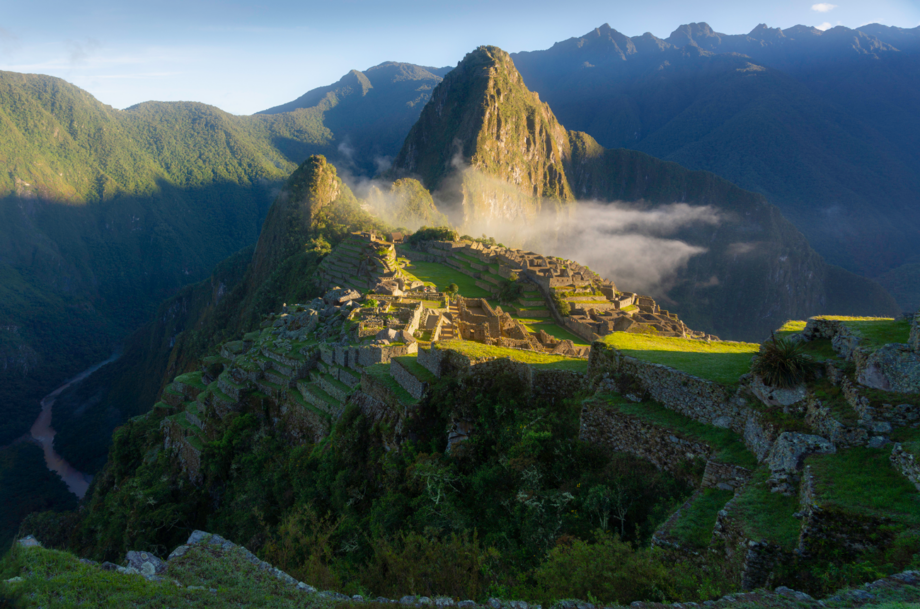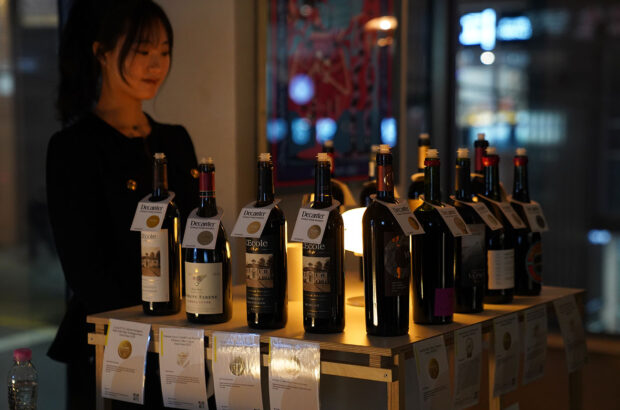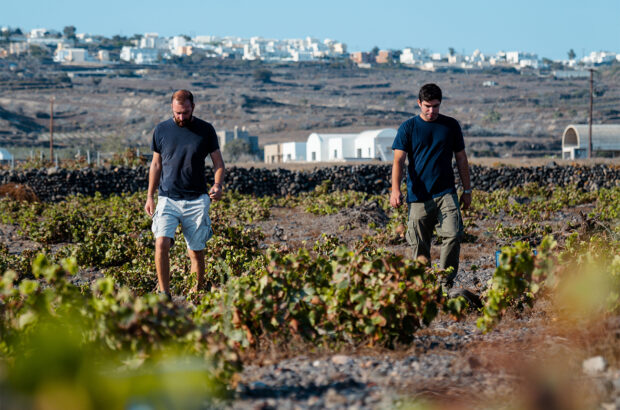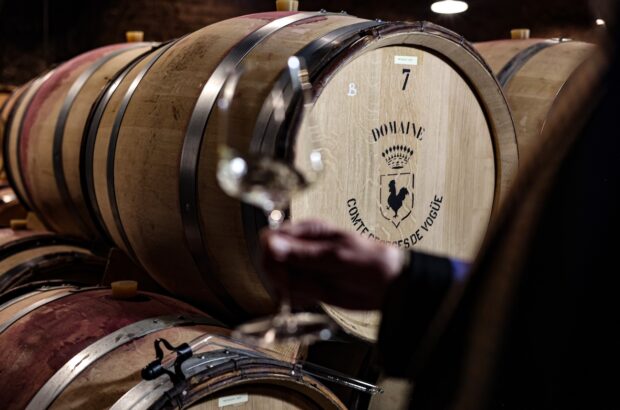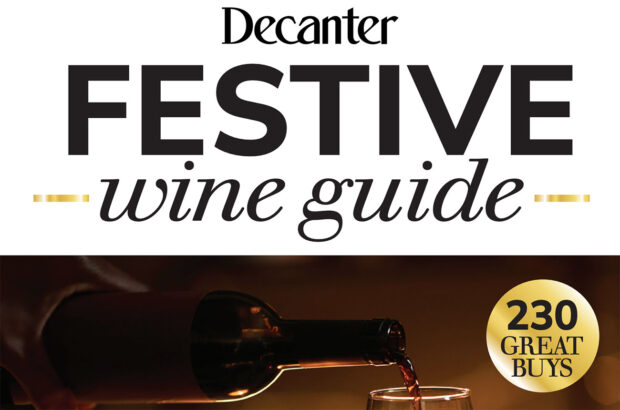The World Heritage-listed city of Cuzco (Cusco), high in the Peruvian Andes, is the former capital of the Incan empire, one of the most extraordinary civilisations in the Americas.
Modern Cuzco is a chaos of colour, mammoth stonework and terracotta roof tiles. The very existence of this populous city at 3,400m elevation, surrounded by the extreme Andes mountains, beggars belief. It’s no wonder that people have been drawn to Cuzco for centuries; the Killke, then the Incas, followed by the conquistadores and now droves of international tourists.
Cuzco is one of the most-visited cities in Peru; together with the surrounding Sacred Valley, it’s on the bucket list of most wanderlust travellers. The ancient citadel of Machu Picchu is most certainly one of the great highlights, but so are the temples and plazas of Pisaq (Pisac), the fortress town of Ollantaytambo, the salt mines of Maras and the ancient terraces of Moray.
Cuzco and the Sacred Valley have long been a palaeophile’s dream, but they are now also a destination for wine lovers and gourmands, offering some of the most authentic taste experiences in Peru.
A gourmand’s route through the Sacred Valley
Local ingredients
Following a boom in gourmet indigenous cuisine in Peru’s capital, the chefs of Lima have been taking regular pilgrimages to Cuzco to source native ingredients from the Andes. Through foraging with locals and building a deeper connection with the place, several exciting new gastronomy projects have unfurled within the Sacred Valley.
Relais & Chateaux’s Sol y Luna was the original luxury digs in the region, with 43 beautiful casitas. It was also one of the first to put haute cuisine on the menu. Under the direction of Diego Muñoz, one of Peru’s most celebrated chefs, the two restaurants here, Killa Wasi and Wayra, take inspiration from Peruvian classics but with an international twist; think fried cuy (guinea pig) and local lamb ragù, paired with South American wines.
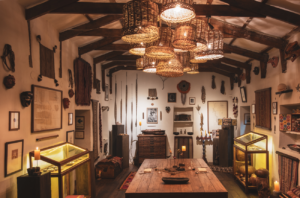
Exhibition and tasting room at ALQA | Courtesy of the restaurant
A newcomer to the Sacred Valley is the beautifully restored Alqa Museum, whose restaurant is making waves with its ‘gastronomic laboratory’. It elevates local ingredients in a playful tasting menu, focused on one key ingredient per course and paired with Peruvian wines. The experience is best enjoyed in the gorgeous garden overlooking the incredible ruins of Ollantaytambo.
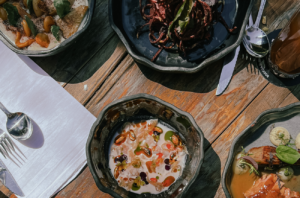
Selection of dishes at ALQA | Courtesy of the restaurant
Tradition and research
But nothing can hold a candle to the intense investigation underway at Virgilio Martínez’s MIL restaurant and research centre. At 3,568m elevation, the location is breathtaking in both altitude and situation, located right next to the ancient terraced amphitheatre of Moray. The Incas used the different levels and microclimates of each terrace to test the suitability of different cultivations and crops at different altitudes in the Andes.
It is fitting that this ancient ‘greenhouse’ now sits beside the test kitchen of MIL, where Virgilio’s head chef Luis Valderrama Silva and his team take diners on a journey through the complex and inviting world of Andean ingredients, flavours and customs. Dishes like Corn Diversity, showing every part and possible texture of a cob of corn, are a work of art. Each course is paired with a beverage – both alcoholic and non-alcoholic options — that take you far beyond the realm of Peruvian wines and into the mad world of beverage director Diego Vasquez Luqu. He and his team create ferments and drinks out of everything from cacao wine to carob kombucha.
The ultimate foodie experience is MIL’s Immersion menu, a five-hour experience that begins bright and early, foraging with locals for indigenous ingredients. Out here, in the wilderness of the mountain landscape, you can more fully grasp the achievement of cultivating tens of thousands of species of tubers, amaranths, grains and legumes that have enriched the world’s pantry today. To then taste the fruit of these centuries of labour within the tasting menu at MIL is a humbling experience.
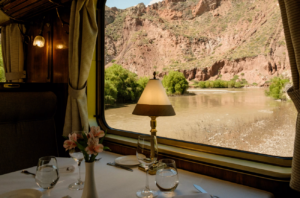
Dining car at the Belmond Hiram Bingham | Courtesy of Belmond
The cherry on the cake for any gourmand visiting the Sacred Valley is taking the Belmond Hiram Bingham train to Machu Picchu. It cuts out the blisters and hiking boots usually required, and offers another once-in-a-lifetime experience along the way. There’s a certain Old World charm to travelling on a vintage train, with each private booth smartly adorned in white linen tablecloths and polished brass lamps. The view is New World in all its glory, of the majestic Andes mountains transitioning to the lush fringes of the Amazon jungle.
A constant soundtrack of live music keeps the journey upbeat and joyful, from Peruvian folk as you board, to pop and rock as you dance the night away on return – all aided by the free-flowing Pisco Sours, cocktails and Champagne from the train bar. The kitchen is led by renowned Peruvian chef Jorge Muñoz; brunch and dinner are traditional Peruvian fare paired with Peruvian wines. Only a train journey such as this could compete with the splendour of Machu Picchu.
My perfect day in Cuzco
Morning
My perfect morning definitely starts with a lie-in, to recover from the altitude or Sacred Valley sightseeing the day before. Exploring the streets of high-altitude Cuzco is breathtaking work, but this is a city best explored on foot, to enjoy the incredible pre-Columbian structures woven together with colonial architecture between narrow cobblestone streets. Start with a top-notch speciality coffee from Three Monkeys Cafe, then walk around the city, exploring the markets, plazas, churches, palaces and cathedral.
Afternoon
For lunch, it has to be Oqre, a secret oasis tucked away in a beautiful old monastery. Jorge Muñoz is the consultant chef, and the gyozas of adobo (spicy pork stew) are unmissable — order two plates, you won’t regret it! While away a couple hours in the peaceful inner sanctum of the Monasterio, where Quechua women do their crafts peacefully in the passageways.
If you’re still wandering around the city’s sights, grab a quick, healthy bite at Qura before continuing to explore. In the afternoon, head to the markets and galleries — Xapiri Ground in the artistic neighbourhood of San Blas, is a personal favourite.
Evening
Peruvian chef Pía León is one of the most exciting chefs to follow in Peru today. Her tasting menu at Mauka is a delightful way to explore the biodiversity of the Peruvian Andes through a procession of mouthwatering dishes; get there early to enjoy at least one of the fabulous pre-dinner cocktails. After dinner, it is just a couple blocks to Oculto, the best wine bar in town. A real hole-in-the-wall spot, Oculto champions the natural wines of Peru and Latin America in a low-key atmosphere, accompanied by some delicious bites (in the unlikely event that you are still hungry).
Wineries & drinks experiences
Some of the very first vines in Peru were planted near Cuzco, in a bid by the Spanish to conquer and settle at the heart of the Incan empire. Those vineyards didn’t last long in such a challenging environment, but a small handful of brave vignerons are now reviving Peru’s high-altitude wine industry with new vines and promising projects.
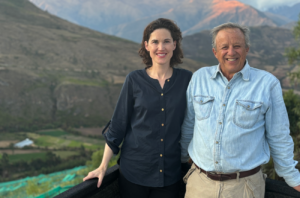
Fernando Gonzales-Lattini and Meg McFarland, founders and owners of Apu | Credit: Amanda Barnes MW
The most successful to date is Apu, a venture by Peruvian Fernando Gonzales-Lattini and his American wife Meg McFarland, in Curahuasi, around 50km (as the crow flies) from Machu Picchu. Making striking Sauvignon Blanc, characterful Sangiovese and small amounts of Cabernet Sauvignon and Syrah, the wines reflect the extreme terroir, with vibrant acidity and intense fruit – they are quite unlike other wines. Visit by appointment, or taste the wines at the restaurants of husband-and-wife duo Virglio Martinez (MIL and Central) and Pía León (Mauka and Kjolle), who have snapped up almost the entire production.
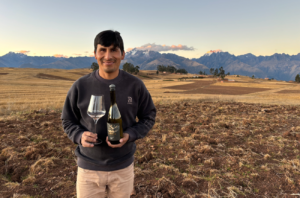
Manual Choqque | Credit: Amanda Barnes MW
What does grow here with ease and abundance are tubers. Peru is the birthplace of the potato, but also the oca. Multi-generational farmer Manuel Choqque has spent 15 years cultivating and selecting super-species of both tubers in the Sacred Valley, developing a fascinating drinks portfolio from them. A visit to his new tasting room and laboratory is mind-blowing — not only for the finesse and vinous quality of his oca wines (white, rosé, red and orange!) but also for opening your mind to the fascinating possibilities of tubers.
Another thirst-quenching stop in the Sacred Valley is the distillery and tasting room of Destilería Andina, founded by former New York lawyer Haresh Bhojwani and hotelier Joaquin Randall in the charming Incan settlement of Ollantaytambo. The spirits are produced from high-altitude Amazonian sugarcane with local herbs, flowers and bitters; they have quickly become some of the most sought-after spirits in Peru. Bhojwani and Randall also own Chuncho, a restaurant in town offering brilliant cocktails from the spirits. Sample Andean craft brews at Cervecería del Valle Sagrado, just a stone’s throw away.
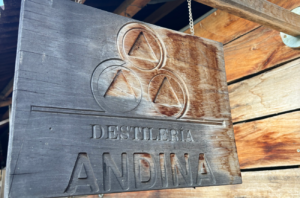
Arriving at Destileria Andina | Credit: Amanda Barnes MW
How to get there / around
Direct flights from major European and US airports arrive in Lima. From there it’s an 80-minute flight to Cusco – or a 24-hour bus ride, but the winding mountain roads aren’t for the faint hearted. Within the Sacred Valley, hire a private taxi driver or take the train to Machu Picchu, with several town stops en route.


